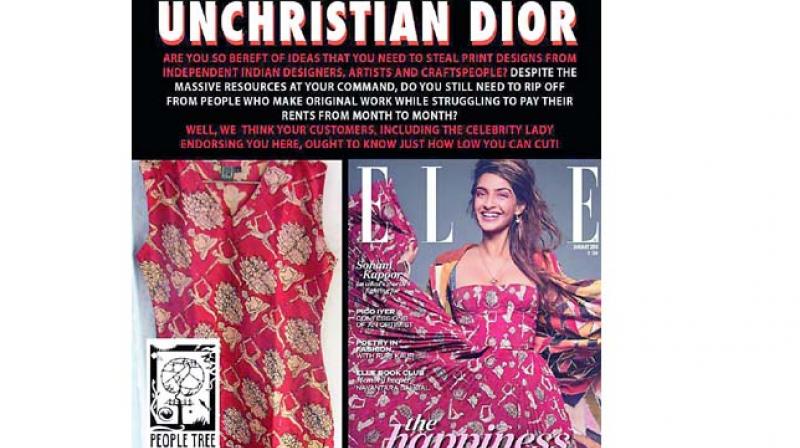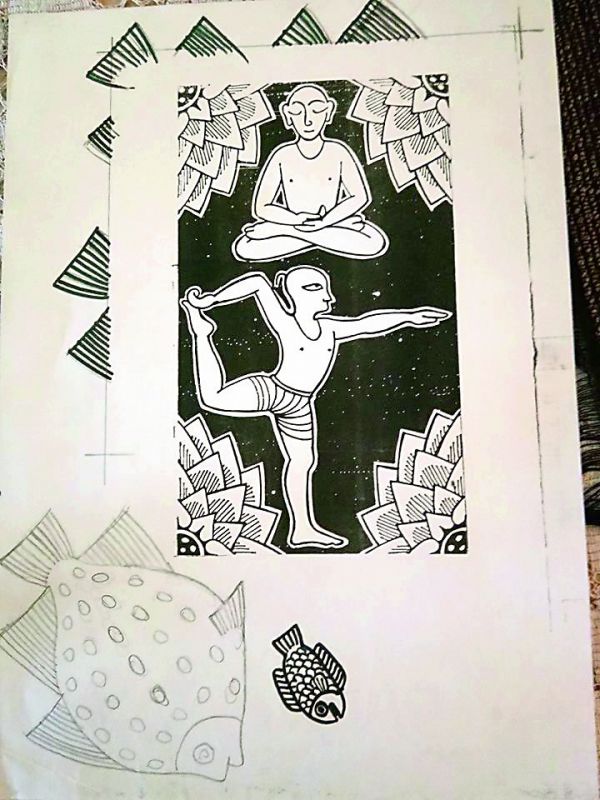When Dior bowed down
Indian designer Orijit Sen and global fashion house Dior have finally settled a controversial plagiarism dispute.

Victory is certainly sweet for artist Orijit Sen, co-founder of an Indian design studio People Tree, whose work was plagiarised by international design house Dior. The incident came to light when actress Sonam Kapoor was featured in Elle India wearing a red-colour corset dress which had a yogi artwork on it, a design Orijit claimed was originally his. Orijit, who took to social media to raise his voice, found multiple supporters. After about four months, and multiple follow ups, Dior and People Tree have reached an amicable settlement out of court. It is a rare victory for independent artists and designers in India, who often have to deal with cases of plagiarism.
“We are elated to have achieved this. This paves the way for a fairer scenario for independent artists, who will be encouraged to create designs knowing that they can take an action if these are copied. Earlier, small studios were accused of copying large companies; here the reverse has happened. This victory shows that even big companies have to be answerable,” says Orijit adding, “As a part of this settlement, we had to sign a non-disclosure agreement that constrains us form revealing the details about the nature of the settlement.”
 The original hand drawn artwork made by Orijit. This black and white photo gives a closer look at the artwork, which can be spotted on Sonam’s dress
The original hand drawn artwork made by Orijit. This black and white photo gives a closer look at the artwork, which can be spotted on Sonam’s dress
Back in January, Orijit wrote to Dior seeking an explanation and gave a clear account of creating the design. Orijit had also mentioned that he had created the design around 18 years ago. “We wrote to them and it took a while for Dior to respond. They agreed to come to the table only if a non-disclosure agreement was signed. They had a legal team and we had hired a lawyer to deal with the case from our side. It was a process of negotiating the terms and our demands. It happened over a period of time; we kept moving back and forth after which we reached a point where we decided to accept the settlement,” says Orijit, adding that Dior cannot use the design further.
With this settlement, Orijit now plans to fulfill his long-pending dream. “I always had this dream of setting up a space where artisans and designers could work together and host workshops with other groups and organisations. We are going to build a studio equipped to hold such workshops and procure the necessary equipment. The studio is being set up in Goa,” he says.
Orijit, however, adds that it wouldn’t have been possible without the support he received on social media with several people sharing the incident and seeking an explanation from Dior. “I also thank DC for reporting about this and raising a voice against plagiarism. It was a battle between an international fashion house and a small Indian design studio, which is why it caught a lot of attention globally as well.”

